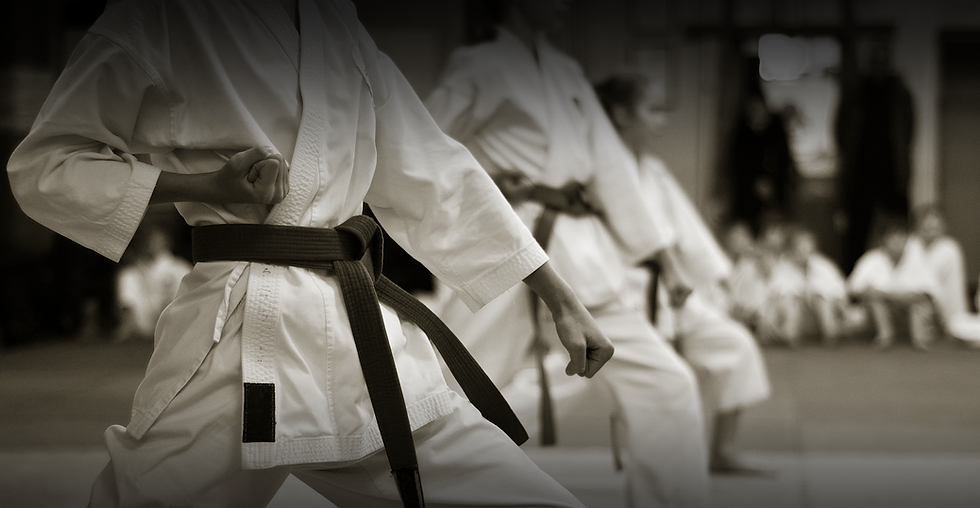Self-Defense vs. Self-Protection
- Annika Kahn
- Sep 27, 2023
- 4 min read
Updated: Nov 1, 2023

Where should your focus be?
These days, people seem to use the term “self-defense” as a catch-all. It’s become so overused that it has lost its meaning. We can google “self-defense” and discover thousands of classes that claim to teach self-defense for women, children, grandparents and even dogs.This kind of instruction is important and valid, but it can miss the key concepts of self-protection, concepts that are designed to help you avoid conflict in the first place. People often discuss self-protection and self-defense as if they’re interchangeable. They are not. And the difference could help save someone’s life. As a mom, a daughter and someone who was kidnapped at a young age, I can say without a doubt that self-protection has kept me alive. Let me explain how. When should we rely on “self-defense” vs. “self-protection?” Let’s dig a little deeper into the meanings of the two terms and why it might be important to teach our loved ones and students the difference.
Self: “A person’s essential being that distinguishes them from others, especially considered as the object of introspection or reflexive action” (Oxford Dictionary) When we are afraid, we become self-centered. All animals share this characteristic. It’s an important survival mechanism. What we do with this self-centeredness is key to our survival. Defense: “The action of defending from or resisting attack” (Oxford Dictionary) Defense often involves machines, tools, guns and tactics for defending one’s home — as in warfare. We can trace some forms of self-defense back to our hunter-gatherer ancestors. Protection: “The action of protecting, or the state of being protected. A person or thing that prevents someone or something from suffering harm or injury” (Oxford Dictionary) Here, the word “protection” invokes planning ahead, which can include preparing borders around one’s home, learning forms of self-defense in case they’re needed, understanding the attacker’s intention before he or she attacks, and ultimately avoiding conflict. As martial artists, we know that it takes years of practice to master self-defense moves. These can include pressure points, strikes, joint locks, kicks and weapons techniques. To know where to grip a joint, apply pressure on a nerve or execute an effective kick takes years of discipline. They require masterful teachers and embodied techniques. The purpose of these techniques is to fend off an attacker. They require knowledge of a skill set that understands which technique to execute when.
For example, if you have developed your wrists and fingers to choke, you understand that you must be in close proximity to the attacker to execute such a technique with a chance of success.
For the vast majority of the population, joint locks, pressure points, weapons, and hand and foot techniques are not in their toolbox. When one attempts to engage in self-defense without proper training, it can fail — and it might be too late to redirect the attacker at that point. On the other hand, every one of us can include forms of self-protection in our toolbox. For example, one of the most important techniques of modern self-protection is to know your surroundings. When you’re walking alone, are you aware of the space behind your body and to the sides? Do you ever pause to assess your surroundings? In Jungshin Fitness, we use the technique of directional-momentum sword training to teach the body and mind to maintain awareness of all elements of spatial distance (strengthening our proprioceptors).
Other techniques that help train people in self-protection include the following:
• Energy manners: How do you walk into crowds and engage with others? Are you invasive with your personality and energy? Do you allow your ki (internal energy) to spill over into the public domain? We can contain ourselves by making ourselves small or big depending on the situation. • Meditation: It aids in the ability of the brain (an organ) to react quickly if needed. When the mind is clear, the response can be immediate. • Good nutrition: A body weighed down with gluten and sugar causes the nervous system to be less aware than when the body runs efficiently with enough water, breath and healthy foods that support the internal organs. • Regular training in forms (kata): Kata are a type of “moving meditation” that keeps the mind focused, calm and aware in all directions. If I had not studied martial arts for 30 years, I would not feel comfortable with a choking technique as my go-to move for self-defensive. I would never want to get that close to an opponent. I still don’t! That is why I focus on self-protection. Knowing how to stay in my own zone and practicing the aforementioned techniques form the most important skill set you need to avoid conflict. The next time you’re rushing, shopping or getting the kids out of the house, see if you can apply a pause technique and notice how your surroundings respond. This small step in self-protection will have a huge impact. I hope incorporating these techniques into your practice contributes to your journey on the path to your best protected, but friendly, self. Be the warrior you are!


